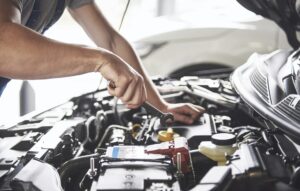How to properly take care of an automatic transmission?

How does an automatic transmission work?
An automatic transmission allows for smooth and trouble-free gear shifting without the need for driver intervention. This significantly contributes to driving comfort and vehicle convenience. Moreover, it is a technologically advanced mechanism consisting of planetary gears, a hydraulic system, and control electronics. Each of these elements works together in a precise and complex manner. For the entire system to function reliably and without failure for many years, regular maintenance is essential. It is also important to follow the manufacturer’s recommendations and apply proper service practices.
Common mistakes in operating an automatic transmission
- Sudden acceleration with a cold engine – causes excessive load on the transmission. This can lead to oil overheating and accelerated component wear.
- Lack of transmission oil change – old oil loses its lubricating and cooling properties. This loss can lead to damage to the transmission and hydraulic components.
- Towing the vehicle in “Neutral” gear – in some transmissions, this can lead to a lack of proper lubrication. Consequently, serious damage to the mechanism may occur.
- Incorrect oil change – for example, changing too late or using the wrong oil can affect the operation of control valves. It also affects clutch plates.
Why is regular oil change in the transmission so important?
Transmission oil in an automatic transmission performs several key functions: it lubricates, cools, removes impurities, and ensures proper hydraulic pressure. Over time, the oil degrades. This means it loses its lubricating and thermal properties. Deposits and metal shavings can lead to internal damage.
Lack of regular oil change can result in:
- Overheating of the transmission – old oil does not effectively dissipate heat, which can lead to damage to clutch plates.
- Jerking and improper gear shifting – contaminated oil can cause problems with control valves. This issue manifests as delayed transmission response to driver commands.
- Seizing of the transmission – insufficient lubrication leads to accelerated wear of metal components.
- Failure of the torque converter – which is a key component in most automatic transmissions, and its damage requires costly repairs.
When to change the oil and filter in the transmission?
It is recommended to change the oil every 50,000 – 100,000 km, depending on the vehicle model and manufacturer specifications. Some modern transmissions have oil described as “lifetime.” However, many experts recommend changing it every 80,000 km to maintain optimal transmission performance.
Using high-quality DENCKERMANN transmission filters allows for longer and trouble-free operation of this complex mechanism.
How to avoid costly repairs of the automatic transmission?

- Avoid frequent starting and stopping in traffic jams in “D” mode – the transmission may heat up faster.
- Regularly check the oil level and condition – a dark brown color of the oil may indicate its wear.
- Avoid aggressive driving – sudden gear changes put a strain on the transmission.
- Trust specialists – choose services that use manufacturer-recommended oils and replacement procedures.
Regular maintenance and avoiding common operational mistakes help maintain smooth transmission operation and avoid costly repairs.



